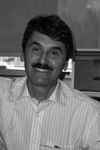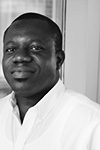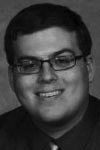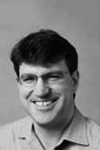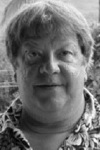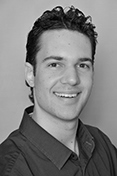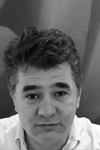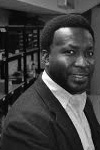advanced fluorescence microscopy workshop
august 17-20, 2015 | urbana-champaign, illinois
Dr. Beniamino Barbieri | ISS, Inc. | President | 1602 Newton Dr. | Champaign, IL 61822 | USA | Tel: 217-359-8681 | beniamino.barbieri@iss.com
Dr. Kingsley Boateng | Research Specialist @ Microscopy Core | IGB/Room 123 | 217-300-1643 | kboateng@igb.illinois.edu
Prof. Stephen A. Boppart | Beckman Institute for Advanced Science and Technology | University of Illinois at Urbana-Champaign | 405 North Mathews Avenue | Urbana, IL 61801 | Tel: (217) 333-8598 | boppart@illinois.edu
Prof. Boppart graduated from the University of Illinois at Urbana-Champaign (UIUC) in 1990 with a B.S. in Electrical Engineering and an option in Bioengineering. Continuing at UIUC, he completed his M.S. in Electrical Engineering in 1991, where he developed microfabricated multi-electrode arrays for neural recordings. From 1991 to 1993, at the Air Force Laser Laboratory in San Antonio, Texas, he conducted research on laser-tissue interactions in the eye, helping establish national laser safety standards. Prof. Boppart then went on to MIT, receiving his Ph.D. in 1998 in Medical and Electrical Engineering. His doctoral studies included the development of optical coherence tomography in Prof. Jim Fujimoto's laboratory. As part of a joint program between MIT and Harvard, Prof. Boppart completed his M.D. from Harvard Medical School in June 2000. Currently, Prof. Boppart is a full professor with appointments in the Departments of Electrical and Computer Engineering, Bioengineering, and Medicine at UIUC. He is Head of the Biophotonics Imaging Laboratory at the Beckman Institute for Advanced Science and Technology and along with a team of 25 researchers, is investigating novel optical diagnostic imaging technologies for basic science and translational clinical applications. From 2006-2008, he served as Founding Director of the Mills Breast Cancer Institute, and holds a joint position with Carle Foundation Hospital and Carle Clinic Association in Urbana, Illinois. His efforts included constructing a new building and developing new infrastructure to support translational research and technology development in breast cancer research between UIUC and Carle Foundation Hospital. Currently he is initiating efforts to direct a campus-wide Illinois Imaging Initiative intended to leverage the strengths and diversity of over 100 faculty working in all aspects of imaging science, technology, and application.
Dr. Austin J. Cyphersmith | University of Illinois at Urbana-Champaign | Carl R. Woese Institute for Genomic Biology | 1206 W Gregory Dr | Urbana, IL 61801 | ajcypher@illinois.edu
Dr. Glenn Fried | Director of Core Facilities IGB | Room 15 | University of Illinois at Urbana-Champaign | 217-333-4328 | gfried@igb.illinois.edu
Prof. David M. Jameson | University of Hawaii at Manoa | Department of Cell and Molecular Biology | John A. Burns School of Medicine | Honolulu, HI 96822 | USA | Tel: 808-956-5034 | Website | djameson@hawaii.edu
A student of the late Prof. Gregorio Weber, David Jameson is Full Professor in the Department of Cell and Molecular Biology at the University of Hawaii. Prof. Jameson's research interests are focused on the development and application of time-resolved and steady-state fluorescence methodologies to elucidate dynamic aspects of biomolecules, including proteins, nucleic acids and membrane systems.
Currently, his laboratory is investigating several protein systems, including dynamin, a large (98kDa) GTPase which functions to "pinch-off" membrane vesicles in pathways such as receptor mediated endocytosis and synaptic vesicle recycling. This research involves both in vitro and in vivo studies on the self-association modes of dynamin as well as its interaction with membranes and other proteins such as endophilin and Arc. His lab also has a project on Botulinum Neurotoxin funded by Allergan, Inc. This project involves biophysical studies on proteins forming the neurotoxin complex as well as development of in vitro and in vivo toxin assays based on fluorescence fluctuation spectroscopy.
Author of more than 130 peer-reviewed articles, Prof. Jameson regularly reviews grants for the American Heart Association, the National Institutes of Health and the National Science Foundation. His research has been supported by grants from the National Institutes of Health, the National Science Foundation and the American Heart Association.
Mr. Matthew Kole | 4153 Beckman Institute | 405 North Mathews Avenue | Urbana, Illinois 61801 | kole2@illinois.eduMatthew Kole is a graduate student in the Department of Bioengineering under the guidance of Prof. Rohit Bhargava. He earned his B.S. in chemistry from the University of Michigan in 2010 and his M.S. in bioengineering in 2012. His research focuses on developing spontaneous and stimulated Raman instrumentation for cell and tissue imaging. His research goals are to increase the speed, accuracy, and throughput of spectroscopic automated histopathology measurements.
Prof. Gabriel Popescu | University of Illinois at Urbana-Champaign | Assistant Professor | 4055 Beckman Institute, MC 251 | 405 N. Mathews | Urbana, Illinois 61801 | (217) 333-4840 | gpopescu@illinois.edu
Dr. Gabriel Popescu is an Assistant Professor in the Department of Electrical and Computer Engineering, University of Illinois at Urbana-Champaign and holds a full faculty appointment with the Beckman Institute for Advanced Science and Technology as well as with the Bioengineering Department.
Prof. Popescu received the B.S. and M.S. in Physics from University of Bucharest, in 1995 and 1996, respectively. He obtained his M.S. in Optics in 1999 and his Ph.D. in Optics in 2002 from the School of Optics/CREOL (now the College of Optics and Photonics), University of Central Florida. Dr. Popescu worked then as a postdoctoral associate at the G. R. Harrison Spectroscopy Laboratory at M.I.T. where he stayed until August 2007, when he joined the University of Illinois at Urbana-Champaign.
Prof. Paul Selvin | Professor of Physics & Biophysics | Affiliate of Cell & Developmental Biology | 365 Loomis Lab of Physics | 1110 W. Green St. | University of Illinois | Urbana IL 61801 | Tel: 217-244-3371 | selvin@illinois.edu
Paul Selvin earned a Ph.D. from the University of California, Berkeley, in 1990. Formally it was in physics, but in reality, it was in biophysics. The last experiment for his thesis, for example, was measuring the torsional rigidity of DNA by looking at a fluorophore intercalated in DNA, twisting around. A paper based on this experiment was published in Science (Selvin, 1992, Science) and later confirmed in a single molecule experiment (Bryant, Nature, 2003).
Professor Selvin did two sets of experiments during his postdoctoral training. One was developing a new type of fluorescence resonance energy transfer (FRET) based on lanthanides, called luminescence resonance energy transfer (LRET). He later used this technique to discover how a potassium ion channel, in part responsible for nerve conduction, responds to voltage (Cha, 1999, Nature; Posson, 2005, Nature). The second involved single molecule fluorescence—the first measurement of FRET between a single donor and single acceptor (Ha, 1996, PNAS).
After joining the Department of Physics at the University of Illinois in 1997, his interest has turned to molecular motors — proteins whose job is moving cargoes around the cell. For example, chromosomes are bound to molecular motors (kinesin and dynein) and under their power, are moved into the two halves of a cell during cell division. Selvin’s task was to determine how the motors moved. They were known to be dimeric, with two “feet,” held together by a head that consumed ATP (the universal food of the cell) and a stalk that bound to the cargo. It was also known that for each ATP burned up, these proteins moved between 8 and 37 nm, depending on the individual motor.
Selvin is now combing FIONA with optical traps (holding particles with light) in vivo, to see how many motors are causing such large velocities. Selvin’s future plans call for measurements in situ, for example, in Planaria and in C. Elegans, to test how these motors act in “real life.”
Dr. Mayandi Sivaguru | Assistant Director of Core Facilities IGB | Room 8 | University of Illinois at Urbana-Champaign | 217-333-1214 | sivaguru@igb.illinois.edu
Prof. Kimani Toussaint | Associate Professor | Mechanical Science and Engineering | 2119 Mechanical Engineering Lab | 105 S. Mathews | Urbana Illinois 61801 | (217) 244-4088 | ktoussai@illinois.eduPrimary Research Area: Nanotechnology - Nano-photonics
Dr. Tomasz Wrobel | Beckman Postdoctoral Fellow | tpwrobel@illinois.eduTomasz’s research interests center on the use of infrared (IR) and raman imaging in application to biomedical studies. He has experience in spectroscopic techniques, which he worked on for his doctoral dissertation at the Faculty of Chemistry at Jagiellonian University in Poland. At the Beckman Institute, he plans to develop a platform for imaging prostate cancer tissues using IR spectroscopy with very high spatial resolution. He plans to work with Rohit Bhargava and Scott Carney in the Bioimaging Science and Technology Group, and Minh Do in the Image Formation and Processing Group.

